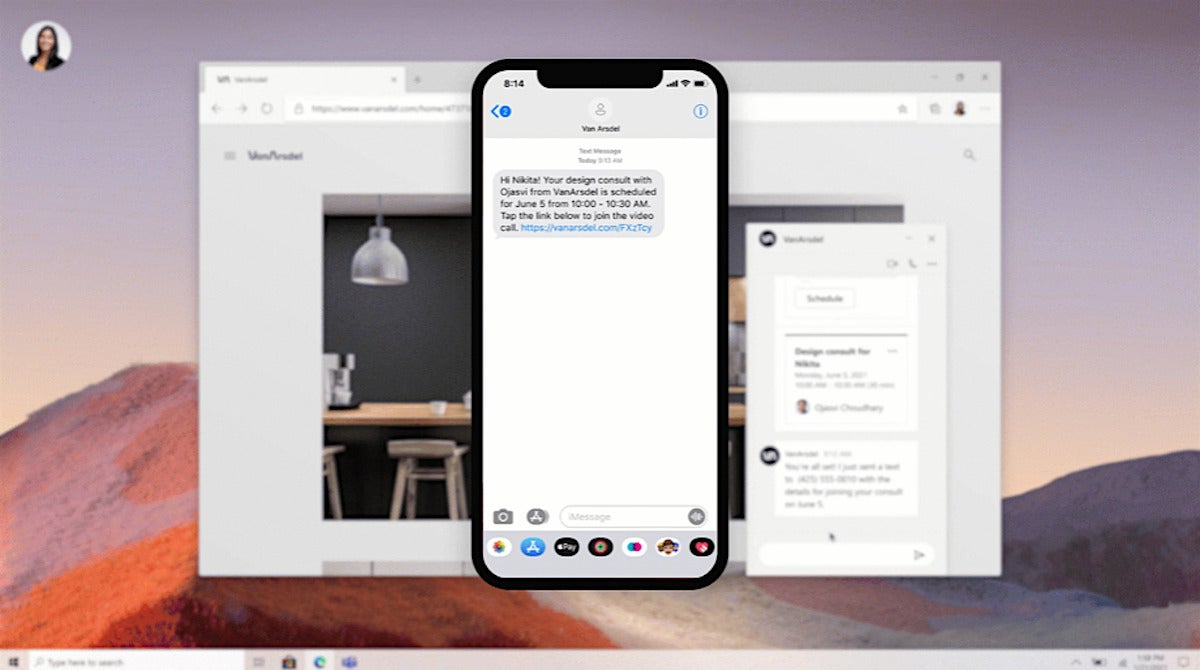Microsoft unveiled new Teams features at its Build virtual conference this week designed to enhance employee collaboration and productivity, with deeper app integrations for video meetings and new co-editing features among the changes.
Together, the moves are aimed at expanding Teams as a platform for work, said Angela Ashenden, a principal analyst at CCS Insight, allowing users to bring a broader set of apps and processes into the Teams environment.
Among the updates is “shared stage integration,” which brings third-party tools, such as whiteboard or design apps, into the central Teams meeting screen — what Microsoft refers to as the “main stage.”
The shared stage integration, currently in private preview, follows the launch last November of Teams Apps for Meetings, which allowed developers to connect 20 third-party apps into the Teams meeting interface, though these were accessible via the side panel only.
The integration of third-party apps into Teams follows similar moves by Microsoft’s rival Zoom, which announced integrations for its own video meeting platform at the Zoomtopia conference last year. “Although it wasn't first to market in announcing meeting apps for Teams … Microsoft has doubled down on its investment in this area and has been able to capitalize on its experience to move comfortably ahead of the market,” said Ashenden.
Other developer-focused updates include the ability to create custom scenes for Teams’ Together mode (expected to be available this summer), “media APIs” to build services around audio and video streams, and “meeting event APIs” to automate some workflows via events such as a meeting’s start and end. Microsoft promised that additional event APIs will be available later this year.
Microsoft also announced that its “Fluid components” will be accessible via the Teams chat interface. Announced at Build in 2019, the Fluid Framework is aimed at removing barriers between collaboration and productivity apps. This means separating elements such as tables, charts, and lists and allowing them to be connected in different tools and updated in real-time.
Fluid components in Teams will allow users to, for instance, update add “next steps” to a shared to-do list, which can simultaneously be accessed and edited by a colleague using Outlook.
“This is part of a broader investment that Microsoft has been making in rethinking the well-established document creation concept, although it is taking time to become a reality, having first been announced two years ago,” said Ashenden.
“It's also an area of increasing competition, with startups Coda and Airtable driving the initial concept, followed by Quip and most recently Google through its smart canvas announcements.”
Fluid components in Teams are currently in private preview.
The cross-platform integrations are part of a wider move to connect Teams with external apps in order to reduce the need to switch screens, said Wayne Kurtzman, a research director at IDC. That's an area where Microsoft has been playing catch-up with its competitors.
“Microsoft is quickly moving Teams into its next chapter where the software you need is integrated into Teams: an area that has been challenging for them when competing with Slack,” he said. “If Microsoft leverages their family of technologies to move more work to a 'single pane of glass' and remove context switching, this could be exciting to see an improved user experience augmented with native intelligence from Azure.”






